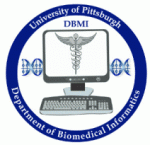Giving your degree-granting program worldwide recognition!
ISCB is pleased to offer the Degree-granting Endorsement Program. This program is intended to provide a process by which degree program directors can have the ISCB certify that the degree meets standards for an education program in the domain of computational biology and bioinformatics. For prospective students, it provides some confidence that the program has been reviewed by the ISCB and meets the standards of the Profession.
ISCB Endorsed Degree Programs receive:
- Listing on the ISCB website with logo linked to chosen URL as an approved degree program
- A certification certificate and logo from the ISCB that can be displayed on a program website or within other promotional materials
- Announcement of the endorsement in the ISCB Newsletter, at ISCB official conference, and via other media outlets used by ISCB
If an official degree program affiliation is of interest to you, please apply by completing this form and emailing your packet to This email address is being protected from spambots. You need JavaScript enabled to view it. with the subject line - ISCB Degree-granting Endorsement Program
For the purposes of this application, a degree program is defined as a set of courses or other requirements culminating in the awarding of an academic degree. The ISCB provides endorsement for the following programs types:
- Bachelor’s degree (B.S./B.A./B.Eng.) in Computational Biology or Bioinformatics
- Master’s degree (M.S./M.Eng.) in Computational Biology or Bioinformatics
- Doctoral degree (Ph.D./Sci.D.) in Computational Biology or Bioinformatics
- Certificate (non-degree-awarding) in Computational Biology or Bioinformatics
Note that programs need not have these specific names, but endorsement certifies they meet the Society’s requirements for degrees by these names.
Nominal Application Fee* Requirements
At this time, ISCB is not charging an application fee to be part of this program. ISCB reserves the right to charge a fee in the future.
Review and Approval Process
If the application passes an initial review then it will be sent to a panel of referees to provide a detailed evaluation of the proposal, known as a Phase I evaluation. It generally takes up to four weeks from the time an application is submitted before an initial determination is made and up to eight weeks for the refereeing process for Phase I. If the referees have questions or concerns about the application, then more than one round of Phase I review may be required. Applications approved after Phase I review will proceed to a Phase II review involving solicitation of additional evidence that the program meets appropriate standards of rigor and that the offering institution has the means, facilities, and institutional support to offer the program as described.
Application Requirements
- Name(s) and contact information of principal applicant(s) – must be ISCB member(s)
- Institution
- Official institution postal mailing address for correspondence
- Name of the degree awarded
- Location(s) at which the degree program is offered
- Language(s) in which program is taught
- Which agencies, aside from the offering university, if any, have certified the degree? (e.g., national degree certification agencies), one per line
- How long has this degree program been in operation? NOTE: The ISCB does not review degree programs until they have been in operation for at least three years
- How many cohorts have graduated to date? NOTE: The ISCB does not review degree programs until they have graduated at least two cohorts
- Total number of program alumni
- Total number of students currently enrolled
- Minimum student effort required for the degree (in hours of time)
- URL to course website
- Program outline (<250 words): Please comment on the purpose of your program, the applicant pool it is intended to serve, the current or intended size of the program, and summarize activities of the program to date.
- Program faculty, providing a list of course instructors, student advisors, program directors, and other key personnel, with titles and affiliations and role in the program. (We understand these roles may change from time to time, so please provide a current or recent snapshot.)
- Summary of course requirements, listing required courses and restricted elective courses, total program requirements, and a sample curriculum
- Summary of learning objectives for the curriculum
- Mapping of course requirements and learning objectives to computational biology core competencies (further explanation provided on the website)
- How do you/will you ensure that the course is inclusive and non-discriminatory, consistent (<250 words)
ISCB strongly encourages the review of the following publications:
- The ISCB competency framework v. 3: a revised and extended standard for bioinformatics education and training https://zenodo.org/records/10466596
- The development and application of bioinformatics core competencies to improve bioinformatics training and education. (2018) Mulder N, Schwartz R, Brazas MD, Brooksbank C, Gaeta B, Morgan S, Pauley M, Rosenwald A, Rustici G, Sierk M, Warnow T, Welch L.
- Applying, Evaluating and Refining Bioinformatics Core Competencies (An Update from the Curriculum Task Force of ISCB’s Education Committee) (2016), Welch, L., Brooksbank, C., Schwartz, R. et al,
- Bioinformatics Curriculum Guidelines: Toward a Definition of Core Competencies. PLoS Comput Biol 10(3): e1003496. doi:10.1371/journal.pcbi.1003496. Welch L, Lewitter F, Schwartz R, Brooksbank C, Radivojac P, et al. (2014)
Competency Framework
- A link to the current version of the ISCB Competency Framework can be found here: https://competency.ebi.ac.uk/framework/iscb/3.0
For questions about the ISCB Degree-granting Endorsement program, please contact This email address is being protected from spambots. You need JavaScript enabled to view it. and include in your subject line – ISCB Degree-granting Endorsement Program
Endorsed Degree-granting Programs
 Bioinformatics and Systems Biology Master's programme from VU Amsterdam and theUniversity of Amsterdam (UvA)
Bioinformatics and Systems Biology Master's programme from VU Amsterdam and theUniversity of Amsterdam (UvA)
Whats BI 2013
Bioinformatics generally applies computer science to solve biological problems. However, the field is interdisciplinary and constantly developing, so it is difficult to answer this question in one sentence. 2012 and 2010-2011 articles have been archived. Earlier Archives are available.
General References
- Fuller JC, Khoueiry P, Dinkel H, Forslund K, Stamatakis A, Barry J, Budd A, Soldatos TG, Linssen K, Rajput AM; HUB Participants.
Biggest challenges in bioinformatics.
EMBO Rep. 2013 Mar 15. PubMed abstract - Song M, Yang CC, Tang X.
Detecting evolution of bioinformatics with a content and co-authorship analysis.
Springerplus. 2013 Apr 26;2(1):186. PubMed abstract - Good BM, Su AI.
Crowdsourcing for Bioinformatics.
Bioinformatics. 2013 Jun 19. PubMed abstract - Hamada M.
Fighting against uncertainty: an essential issue in bioinformatics.
Brief Bioinform. 2013 Jun 26. PubMed abstract - Bernard V, Michaut M.
Explain bioinformatics to your grandmother!
PLoS Comput Biol. 2013 Oct;9(10):e1003305. PubMed abstract
Selected Topics
- Dolled-Filhart MP, Lee M Jr, Ou-Yang CW, Haraksingh RR, Lin JC.
Computational and bioinformatics frameworks for next-generation whole exome and genome sequencing.
ScientificWorldJournal. 2013;2013:730210. PubMed abstract - Carrico J, Sabat A, Friedrich A, Ramirez M; on behalf of the ESCMID Study Group for Epidemiological Markers (ESGEM).
Bioinformatics in bacterial molecular epidemiology and public health: databases, tools and the next-generation sequencing revolution.
Euro Surveill. 2013 Jan 24;18(4). PubMed abstract - Rossi S, Calin GA.
Bioinformatics, Non-coding RNAs and Its Possible Application in Personalized Medicine.
Adv Exp Med Biol. 2013;774:21-37. PubMed abstract - Góngora-Castillo E, Buell CR.
Bioinformatics challenges in de novo transcriptome assembly using short read sequences in the absence of a reference genome sequence.
Nat Prod Rep. 2013 Apr;30(4):490-500. PubMed abstract - Hong H, Zhang W, Shen J, Su Z, Ning B, Han T, Perkins R, Shi L, Tong W.
Critical role of bioinformatics in translating huge amounts of next-generation sequencing data into personalized medicine.
Sci China Life Sci. 2013 Feb;56(2):110-8. PubMed abstract - Caccia D, Dugo M, Callari M, Ongarzone I.
Bioinformatics tools for secretome analysis.
Biochim Biophys Acta. 2013 Feb 5. pii: S1570-9639(13)00050-2. PubMed abstract - Gromiha MM, Ou YY.
Bioinformatics approaches for functional annotation of membrane proteins.
Brief Bioinform. 2013 Mar 23. PubMed abstract - Ngounou Wetie AG, Sokolowska I, Woods AG, Roy U, Deinhardt K, Darie CC.
Protein-protein interactions: switch from classical methods to proteomics and bioinformatics-based approaches.
Cell Mol Life Sci. 2013 Apr 12. PubMed abstract - Tsongalis GJ, Chao E, Hagenkord JM, Hambuch T, Moore JH.
Bioinformatics: What the Clinical Laboratorian Needs to Know and Prepare For.
Clin Chem. 2013 May 30. PubMed abstract - Li MW, Qi X, Ni M, Lam HM.
Silicon era of carbon-based life: application of genomics and bioinformatics in crop stress research.
Int J Mol Sci. 2013 May 29;14(6):11444-83. PubMed abstract - Moriconi F, Beard MR, Yuen LK.
Bioinformatics methods for the analysis of hepatitis viruses.
Antivir Ther. 2013;18(3 Pt B):531-9. PubMed abstract - Hassanien AE, Al-Shammari ET, Ghali NI.
Computational intelligence techniques in bioinformatics.
Comput Biol Chem. 2013 Jul 10;47C:37-47. PubMed abstract - Kouskoumvekaki I, Shublaq N, Brunak S.
Facilitating the use of large-scale biological data and tools in the era of translational bioinformatics.
Brief Bioinform. 2013 Aug 1. PubMed abstract - Sun P, Ju H, Liu Z, Ning Q, Zhang J, Zhao X, Huang Y, Ma Z, Li Y.
Bioinformatics resources and tools for conformational B-cell epitope prediction.
Comput Math Methods Med. 2013;2013:943636. PubMed abstract - Sankar S, Nayanar SK, Balasubramanian S.
Current trends in cancer vaccines - a bioinformatics perspective.
Asian Pac J Cancer Prev. 2013;14(7):4041-7. PubMed abstract - Overby CL, Tarczy-Hornoch P.
Personalized medicine: challenges and opportunities for translational bioinformatics.
Per Med. 2013 Jul 1;10(5):453-462. PubMed abstract - Misra N, Panda PK, Parida BK.
Agrigenomics for Microalgal Biofuel Production: An Overview of Various Bioinformatics Resources and Recent Studies to Link OMICS to Bioenergy and Bioeconomy.
OMICS. 2013 Sep 17. PubMed abstract - Gu P, Chen H.
Modern bioinformatics meets traditional Chinese medicine.
Brief Bioinform. 2013 Sep 24. PubMed abstract - Choong YS, Tye GJ, Lim TS.
Minireview: Applied Structural Bioinformatics in Proteomics.
Protein J. 2013 Oct 6. PubMed abstract - Bencharit S, Border MB, Edelmann A, Byrd WC.
Update in research and methods in proteomics and bioinformatics.
Expert Rev Proteomics. 2013 Oct;10(5):413-415. PubMed abstract - Zhou S, Liao R, Guan J.
When cloud computing meets bioinformatics: a review.
J Bioinform Comput Biol. 2013 Oct;11(5):1330002. PubMed abstract - Naulaerts S, Meysman P, Bittremieux W, Vu TN, Vanden Berghe W, Goethals B, Laukens K.
A primer to frequent itemset mining for bioinformatics.
Brief Bioinform. 2013 Oct 26. PubMed abstract - Lopes RD, Resende NM, Honorio-França AC, França EL.
Application of Bioinformatics in Chronobiology Research.
ScientificWorldJournal. 2013 Sep 25;2013:153839. PubMed abstract - Huang X, Bruce B, Buchan A, Congdon CB, Cramer CL, Jennings SF, Jiang H, Li Z, McClure G, McMullen R, Moore JH, Nanduri B, Peckham J, Perkins A, Polson SW, Rekepalli B, Salem S, Specker J, Wunsch D, Xiong D, Zhang S, Zhao Z.
No-boundary thinking in bioinformatics research.
BioData Min. 2013 Nov 6;6(1):19. PubMed abstract
Links and references provided by Lynda Ellis






